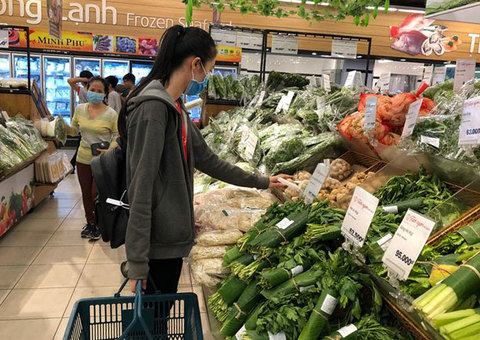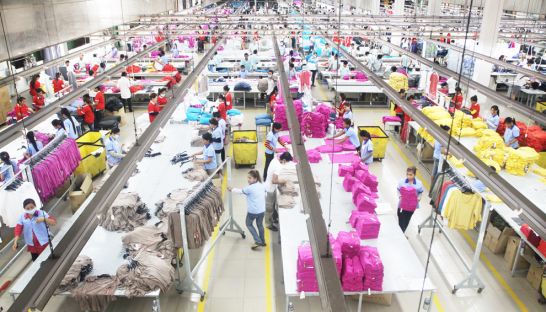Tours aimed at attracting workers
Tours aimed at attracting workers
As cooks prepped for lunch yesterday at an outdoor cafeteria for workers employed by the Japanese-owned Taica factory, more than a dozen commune-level officials inspected the premises. Seemingly satisfied with the dining operation, they moved into a recreational room with a large, flat-screen television.
“After they see our conditions, they distribute the information [back home],” said Kea Sophon, HR assistant at the Phnom Penh Special Economic Zone on the outskirts of the capital, where the factory is set up. “Free Wi-Fi”, another staffer pointed out, referring to the recreational room.
Taica makes shock-absorbent gel products for everything from shoe soles to the needles of speedometers in cars. Assembly is expanding and more workers are needed, a typical problem amid Cambodia’s growing manufacturing industry, whose labour shortages have been exacerbated by ongoing unrest in the garment sector.
Recognising the need to quell nerves and instill trust in the industry, which accounts for the biggest chunk of formal employment in Cambodia, Phnom Penh Special Economic Zone (PPSEZ) officials have been quietly leading the informational tours for nearly three years. Representatives also travel to the provinces, with the ultimate hope that local leaders pass on messages about favourable working conditions, combating widespread fears, some genuine, some alarmist, about factory employment.
“People from the countryside suspect we recruit young girls and send them to Thailand,” said Hiroshi Uematsu, chief executive officer of PPSEZ, one of the more advanced special economic zones in Cambodia. Inside the expansive property along National Road 4, PPSEZ rents out factory space, provides one-stop shop services for exporters and bears the burden of central infrastructure costs.
But in a country beset by labour woes, convincing workers to travel from home to a city where strikes can turn deadly and political strife stirs fears may prove difficult.
The visit comes amid an ongoing minimum wage dispute in the garment sector that has seen the capital set alight with violent clashes between authorities and protestors. After a nationwide strike was announced December 24, tensions rose more than a week later when police opened fire on protestors, killing at least four near Canadia Industrial Park in southwest Phnom Penh on January 3. Since the clashes, which preceded the dismantling of the opposition party’s protest camp at Freedom Park, rallies have been outlawed by the government and authorities have violently stopped many attempts to assemble peacefully. The strike withered
following the crackdown.
Production at the zone was largely unaffected during the walkout, as military police blocked the entrance to the facility. Concrete barriers were also erected. After two days of protesting outside, crowds dispersed to join larger gatherings, like that at Veng Sreng Boulevard next to Canadia park. Still, workers joined demonstrations or simply went home out of fear for security, causing hiccups in production. Security was on the minds of the visiting community leaders from Kampong Chhnang, Siem Reap, Kampot, Takeo, Battambang, Kampong Cham, Kampong Thom and Pursat provinces yesterday. They went to six of the nearly 50 factories in operation, most of which are under Japanese management.
Many of the responses were positive, but officials were also treated to a VIP tour, which may have created a better impression of factory life than what the typical worker experiences.
One attendee, Peurk Chanthou, member of the commune council in Takeo province, said that after previous visits to her hometown, PPSEZ staff sparked interest among potential workers. But first, she had to see the place for herself.
“After a real visit, I am more confident to tell villagers that the place of work is safe and has high security,” she said.
phnompenh post















